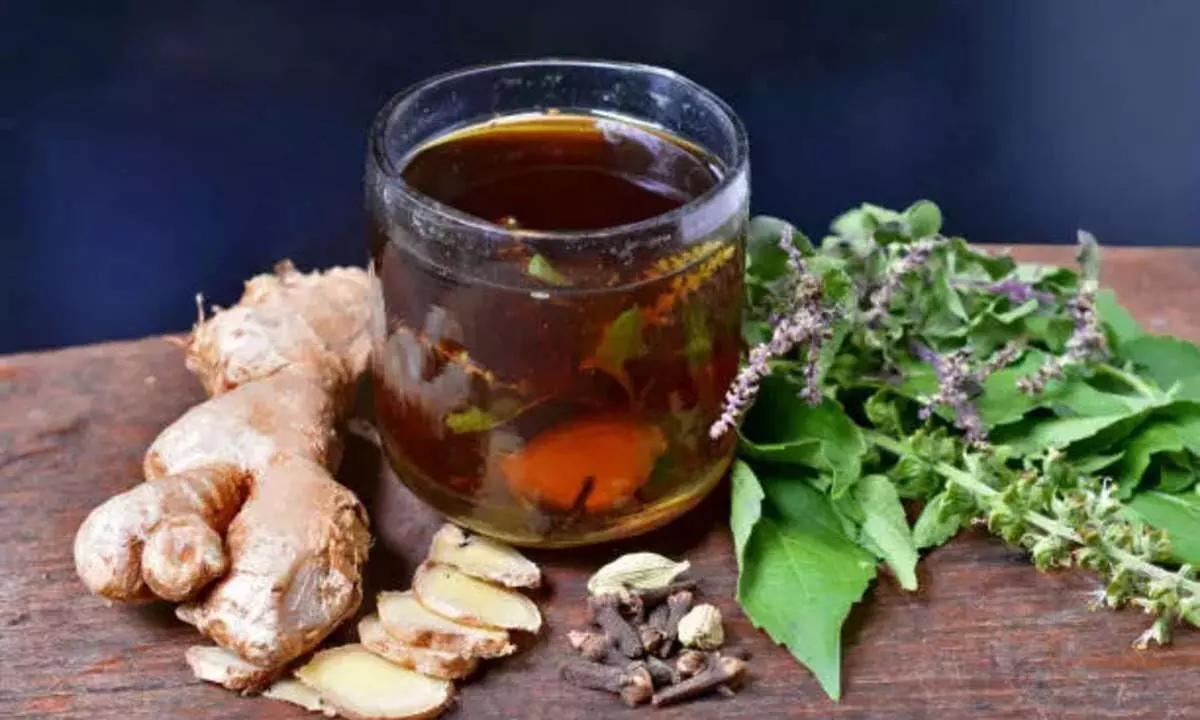Live
- ‘Drinker Sai’ appeals to both younger and family audiences: Producer Basavaraju Laharidhar
- Kerala BJP’s ‘love’ towards Christians is fake: Ex party leader
- Google Gemini Now Features PDF Screen Awareness in the Files App
- Anupama graces Vogue India’s January-February cover
- Captivating poster from ‘Shambhala’ unveiled
- DMK desperately trying to counter BJP‘s rise in TN: ANS Prasad
- Cyber Crimes Surge by 18% in 2024: Director Shikha Goel Reports
- BGT: We are seeing a master at work; I take my hat off to him, says Abbott on Bumrah
- Niranjan Reddy Slams Jupally Krishna Rao and Government Over Irrigation Incompetence
- Gardner reflects on Australia's dominant year after ODI series sweep over NZ
Just In

Botanists have recently rediscovered the smilax turbans, a long-lost plant species akin to a well known an Ayurvedic therapeutic plant in the pristine forests of Kurung Kumey district of Arunachal Pradesh, 500 km away from where it was last collected 95 years ago.
Itanagar: Botanists have recently rediscovered the smilax turbans, a long-lost plant species akin to a well known an Ayurvedic therapeutic plant in the pristine forests of Kurung Kumey district of Arunachal Pradesh, 500 km away from where it was last collected 95 years ago.
The plant, an endemic species of Arunachal Pradesh, is a wild counterpart of Chopchini, also known as smilux china well known Ayurvedic therapeutic plant, according to a report in the website of the department of science and technology.
It was last collected in 1928 by F Kingdon-Ward and the researchers presented detailed description, illustrations, microscopic images, distribution, phenology, field and comparisions with closely related species after the rediscovery to facilitate its identification and eventual conservation. The feat came during recent exploratory endeavours aimed at locating it the wild relative of Chopchini (smilux china) in the country. Ritesh Kumar Choudhary, a leading scientist of the Pune-based Agharkar Research Institute and his doctoral student Geetika Sukhramani successfully identified the plant blooming in Kurung Kumey district. The information about the rediscovery was uploaded in the website.
According to the report, the rediscovery is not only a scientific milestone but also holds immense ecological importance. The researchers will now explore the role of this native species in the local ecosystem and its interaction with other flora and fauna.
The findings could potentially have implications for medicinal research as various smilax species have been known for their therapeutic properties in traditional medicine, it said. Chopchini possesses anti-inflammatory properties and enhances the functioning of the immune system besides overall well-being. Along with these are its beneficial effects on reproductive health and gastrointestinal system, which makes Chopchini a highly valuable botanical resource for traditional Ayurvedic therapy. Meanwhile a comprehensive report has been compiled for the Arunachal Pradesh forest department to protect the rediscovered plant species from any risks and assure its long-term survival.
The rediscovery underlines the importance of preserving unique bio diverse ecosystems and offers scientists the opportunity to learn more about the species. It can also lead to the development of new pharmaceuticals, herbal remedies, or agricultural commodities that could benefit human health and livelihoods, the report said. It also suggested ways of examining and preserving smilax turbans within its indigenous environment while also conducting rigorous surveillance of its population dynamics and ecological interrelationships.
There are approximately 262 distinct species of the plant across the globe with 39 of them growing in India. Smilax turbans first came to light in the early 20th century when it was described by the scientists F T Wang and Tang based on specimens collected between 1911–1928 by the botanists I H Burkill and F Kingdon-Ward during their explorations in Arunachal Pradesh. After its initial identification, the plant seemingly vanished from the scientific records and remained hidden from the world for long 95 years. Choudhary said, "Rediscovering smilax turbans after almost a century is a remarkable achievement for the scientific community. This extraordinary plant which was neglected and underexplored, has long been considered a holy grail of botanical rediscoveries and our successful efforts are a testament to the significance of preserving biodiversity and conducting thorough explorations in remote regions." The rediscovery of smilax turbans serves as a reminder of the mysteries that still lie hidden in the world's most remote and biodiverse regions and the importance of preserving these unique ecosystems, he added.

© 2024 Hyderabad Media House Limited/The Hans India. All rights reserved. Powered by hocalwire.com






